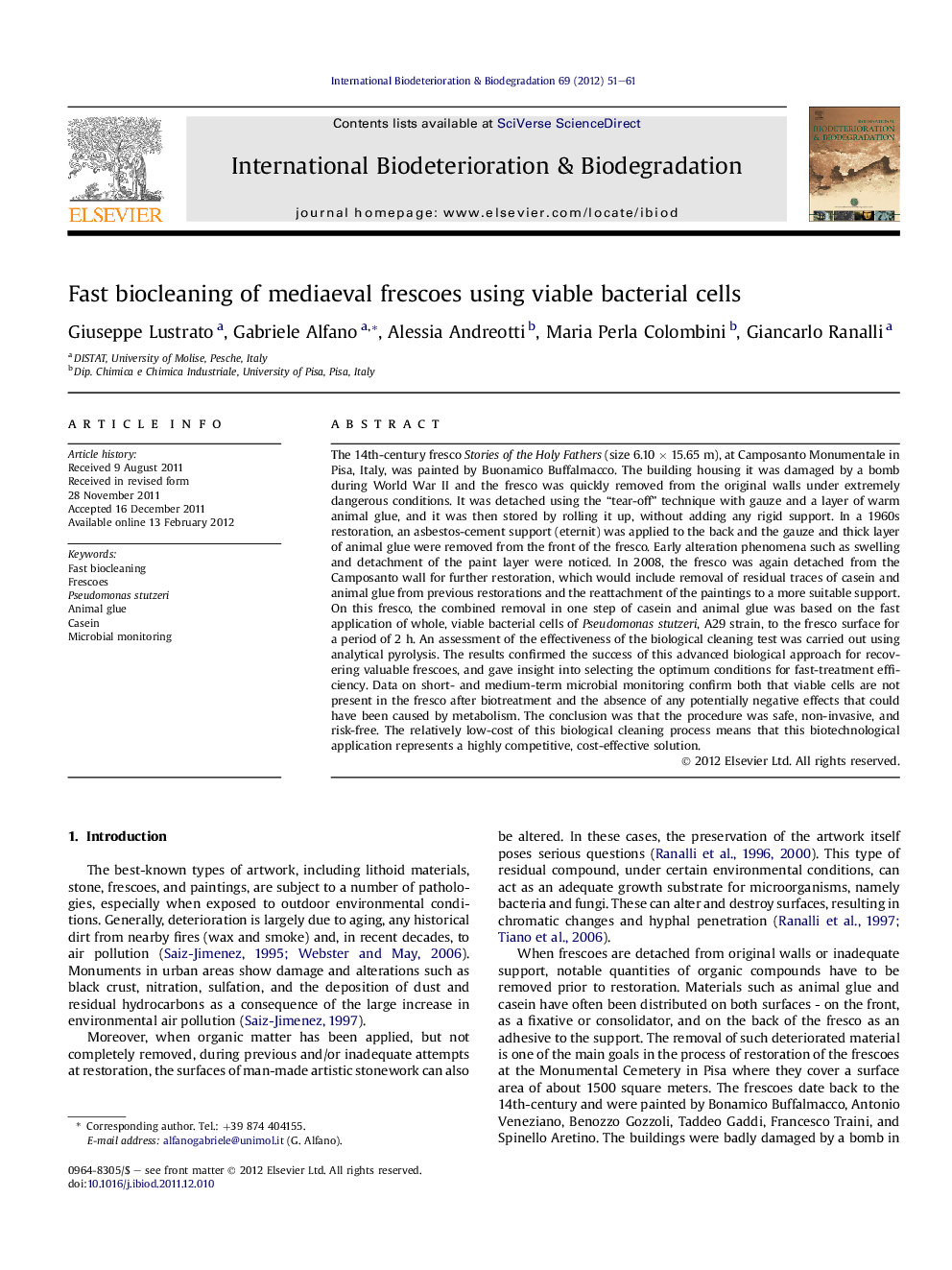| Article ID | Journal | Published Year | Pages | File Type |
|---|---|---|---|---|
| 4365237 | International Biodeterioration & Biodegradation | 2012 | 11 Pages |
The 14th-century fresco Stories of the Holy Fathers (size 6.10 × 15.65 m), at Camposanto Monumentale in Pisa, Italy, was painted by Buonamico Buffalmacco. The building housing it was damaged by a bomb during World War II and the fresco was quickly removed from the original walls under extremely dangerous conditions. It was detached using the “tear-off” technique with gauze and a layer of warm animal glue, and it was then stored by rolling it up, without adding any rigid support. In a 1960s restoration, an asbestos-cement support (eternit) was applied to the back and the gauze and thick layer of animal glue were removed from the front of the fresco. Early alteration phenomena such as swelling and detachment of the paint layer were noticed. In 2008, the fresco was again detached from the Camposanto wall for further restoration, which would include removal of residual traces of casein and animal glue from previous restorations and the reattachment of the paintings to a more suitable support. On this fresco, the combined removal in one step of casein and animal glue was based on the fast application of whole, viable bacterial cells of Pseudomonas stutzeri, A29 strain, to the fresco surface for a period of 2 h. An assessment of the effectiveness of the biological cleaning test was carried out using analytical pyrolysis. The results confirmed the success of this advanced biological approach for recovering valuable frescoes, and gave insight into selecting the optimum conditions for fast-treatment efficiency. Data on short- and medium-term microbial monitoring confirm both that viable cells are not present in the fresco after biotreatment and the absence of any potentially negative effects that could have been caused by metabolism. The conclusion was that the procedure was safe, non-invasive, and risk-free. The relatively low-cost of this biological cleaning process means that this biotechnological application represents a highly competitive, cost-effective solution.
► Biocleaning application on a fresco painting. ► Monitoring of cell viability and activity. ► On site bioremoval of animal glue and casein on mediaeval painting.
